#patricia huston
Text
Kraftwerk - Warped Dummy
youtube
#kraftwerk#schaufensterpuppen#showroom dummies#ralf hütter#florian schneider#karl bartos#wolfgang flür#electronic#art pop#synthpop#krautrock#trans europe express#1977#song remixed/rewarped by Are Sounds Electrik?/Tony M2#2023#blake edwards#experiment in terror#glenn ford#patricia huston#1962#Youtube
8 notes
·
View notes
Text
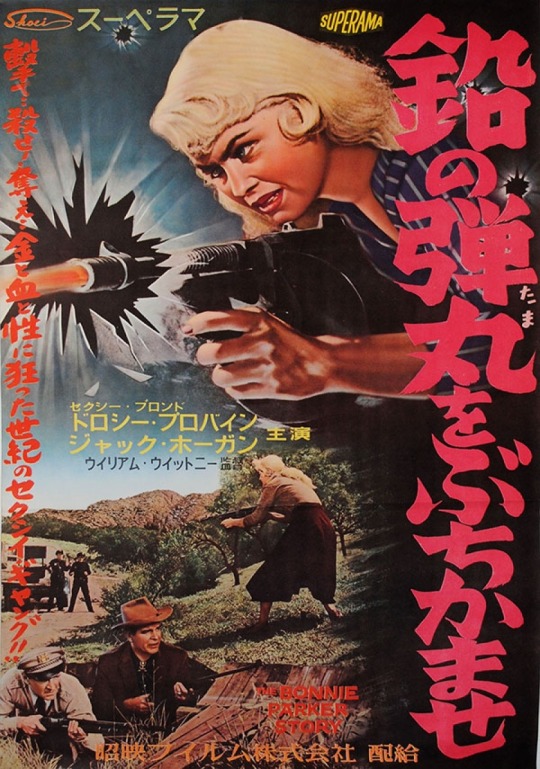
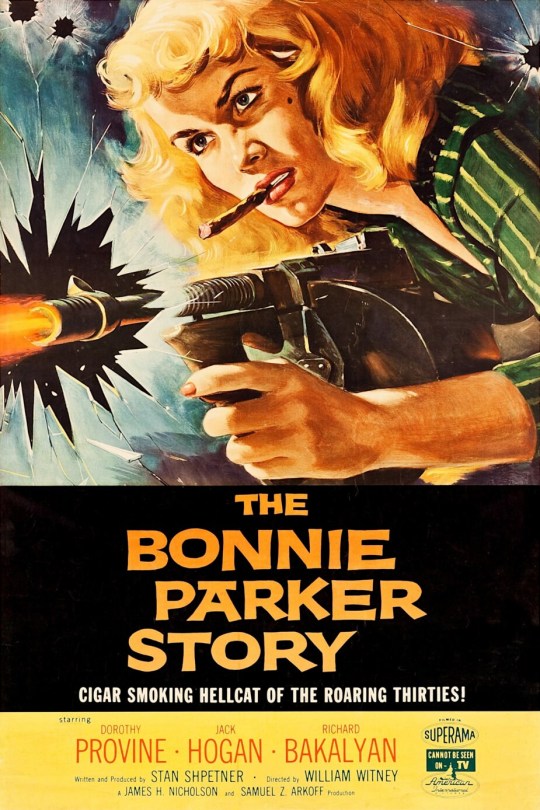


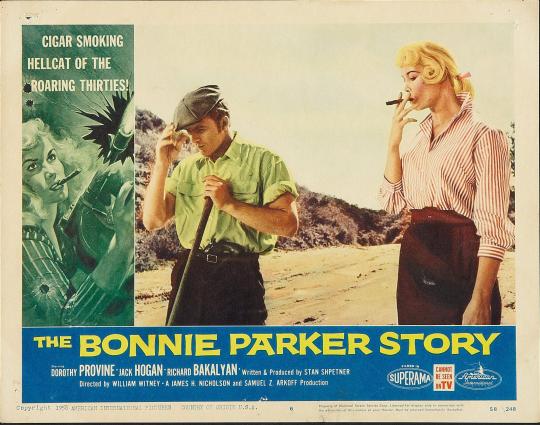
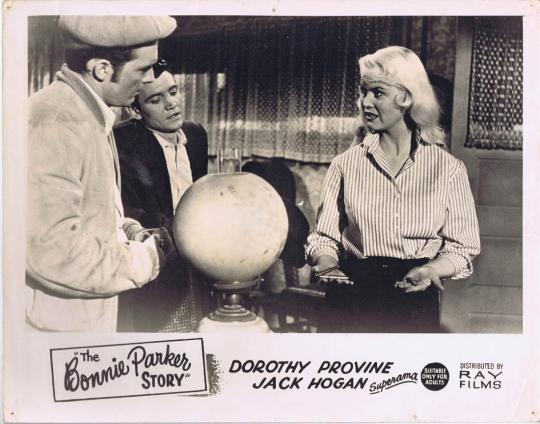
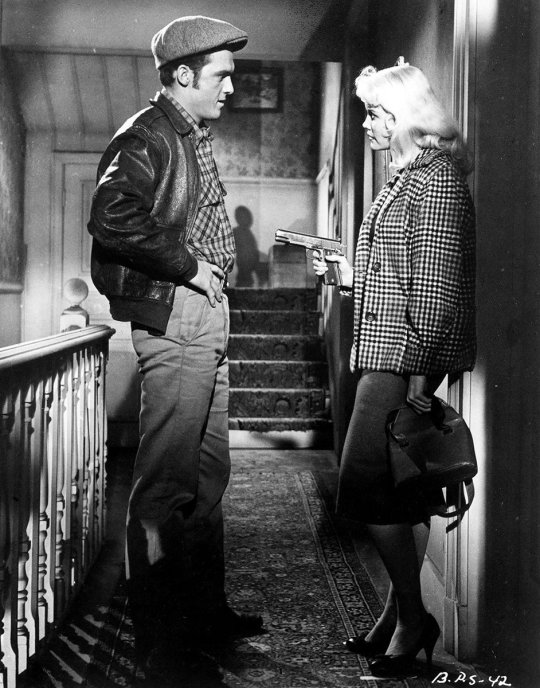

The Bonnie Parker Story (1958) William Witney
May 12th 2024
#the bonnie parker story#1958#william witney#dorothy provine#jack hogan#richard bakalyan#joe turkel#patricia huston#douglas kennedy#the bonnie parker story: the female monster
0 notes
Text

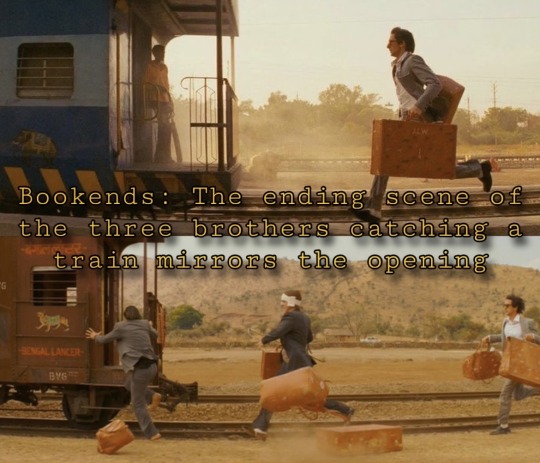
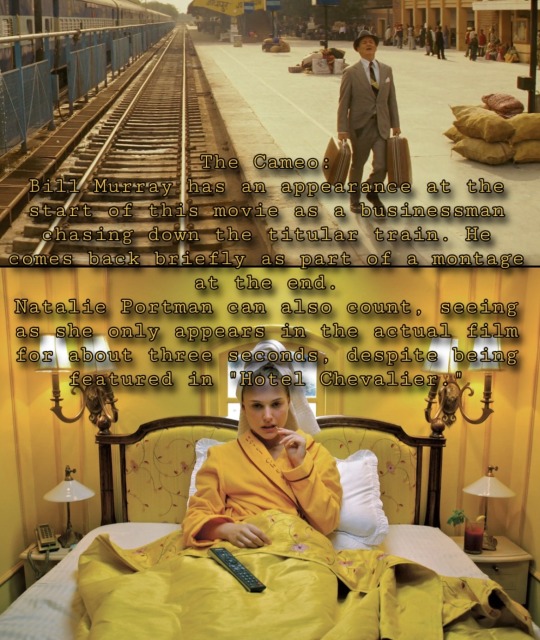
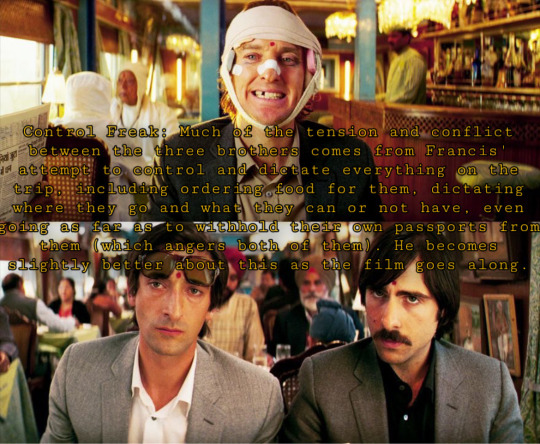
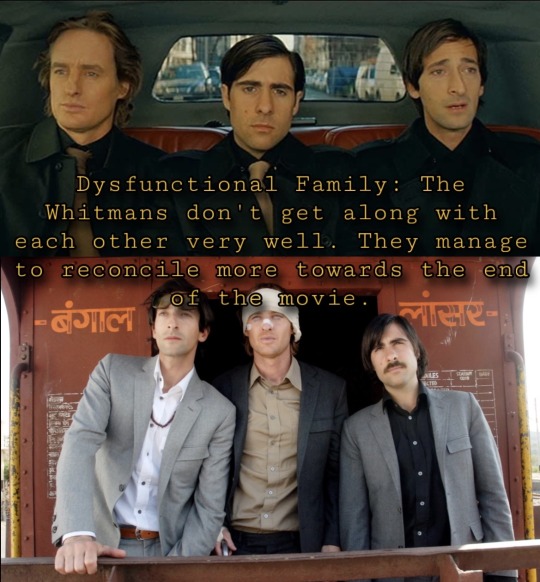

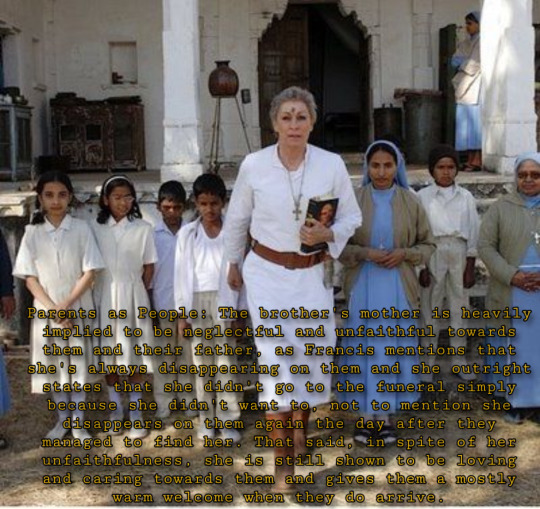


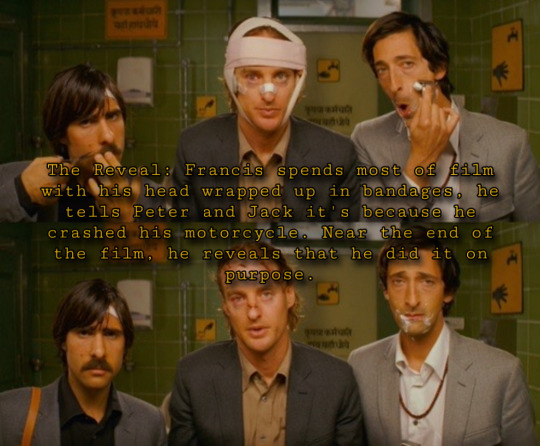
Wes Anderson Movies + Tv tropes part 5/12
The Darjeeling Limited Edition
#wes anderson#the darjeeling limited#jason schwartzman#owen wilson#adrien brody#anjelica huston#jack whitman#peter whitman#francis whitman#patricia whitman#bill murray#natalie portman#shut up pretty boy#tv tropes
46 notes
·
View notes
Text
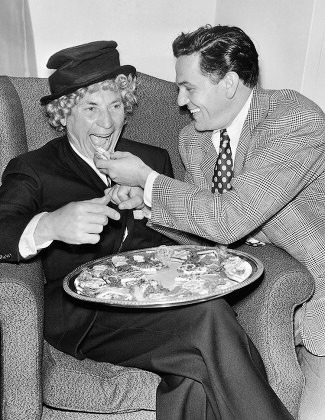
JULIE DOING “STUFF” WITH FAMOUS PEOPLE (10th post)
Above Julie takes finger food to a new level with Harpo Marx.

Above with Patricia Neal in a still from THE BREAKING POINT.

Julie and Jennifer Jones mask up as they dig a freedom fighting tunnel WE WERE STRANGERS.

The two actors are getting some background behind the scenes from director, John Huston for the same film.
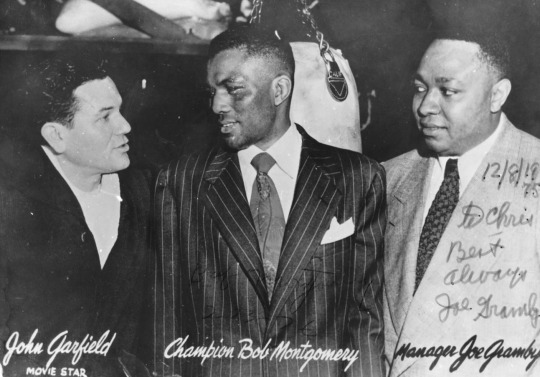
Wonder if Julie picked up some tips from boxer, Bob Montgomery for BODY AND SOUL? Montgomery was a boxer who took the New York State Athletic Commission World Lightweight Championship in May 1943, and again in March 1944. His managers included Joe Gramby.
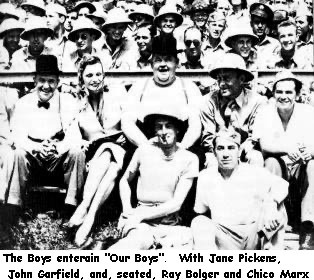
Pictured above in one of the earliest USO Tours, The Flying Showboat in 1941.

The Flying Showboat with John Garfield, Ray Bolger, Mitzi Mayfair, Oliver Hardy, Jane Pickens, Stan Laurel and Chico Marx in Miami on November 1, 1941. Here’s some explanation about The Flying Showboat from Laurel & Hardy Central:
“The Flying Showboat, a revue toured U.S. military bases in the Caribbean. Once again, Chico Marx was on board, with other stars such as singer Jane Pickens, dancer Ray Bolger and actor John Garfield, who acted as master of ceremonies. These stars performed under some extremely trying conditions, as the weather was brutally hot and many of the camps were not equipped to host theatrical performances. Chico, whose "shoot the keys" piano solos were the heart of his act, often had to do without a piano at all. Thankfully, Laurel and Hardy's Driver's License sketch needed only a few simple props. In any event, even the most ramshackle shows brought loud cheers from the troops, overjoyed that anybody had come to perform for them, let alone some of the finest talents Hollywood had to offer.”

Julie performs with actor, George Tobias at another USO show at Drew Field during the making of AIR FORCE.
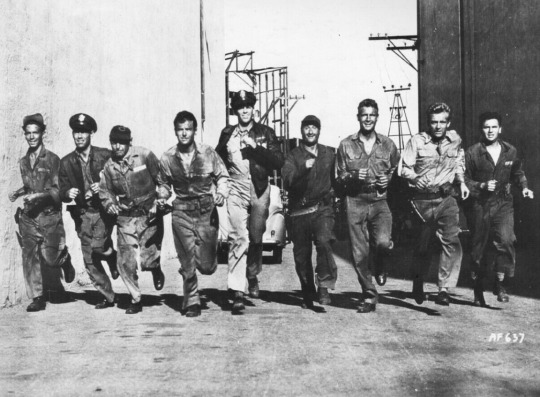
The ensemble is ready for action for the film AIR FORCE directed by Howard Hawks.
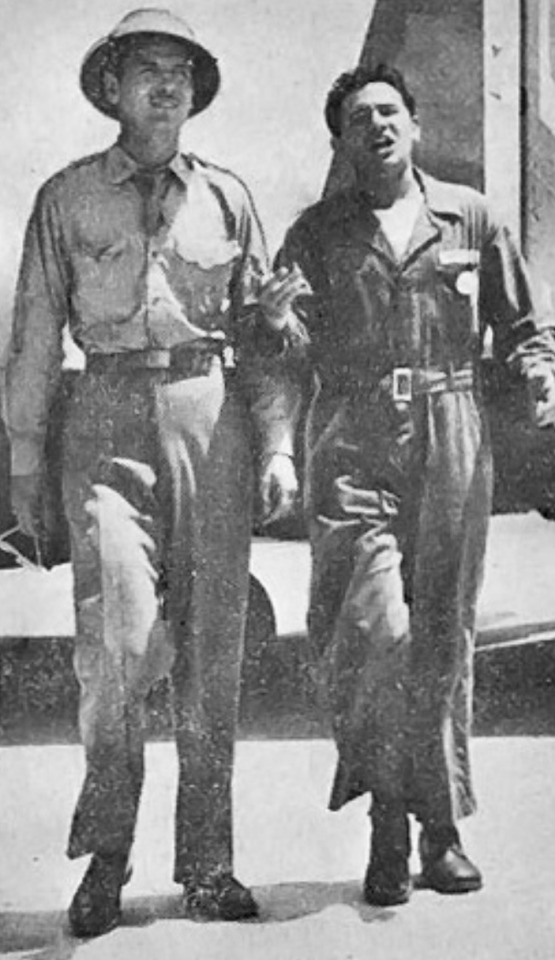
Julie is pictured above with actor, Gig Young at Drew Field on location for AIR FORCE.
#john garfield#harpo marx#laurel and hardy#jennifer jones#ray bolger#Chico Marx#John Houston#we were strangers#the breaking point#Patricia Neal#air force film#howard hawks#gig young#george tobias#the flying Showboat#Julie doing “stuff” with famous people
22 notes
·
View notes
Text
Tagged by @antiquitea.
3 ships: This changes like...all the time. Wave something shiny and pretty and vaguely antagonistic at me and I'm pretty much yours.
I rewatched Top Gun Maverick over the weekend and even though the point of The Hard Deck intro was to establish that they all knew each other carnally, I'm feeling very into Hangman/Phoenix at the moment because who doesn't love a pairing with two extremely attractive people being shitheads to each other while secretly wanting to bone?
I feel a flare up of "why didn't Grace and Daniel make out in Ready Or Not?" at least once a month so that's still a thing, I guess. Adam Brody deserves better than being a second tier character in those dumb Shazam movies.
I miss seeing Kyle Valenti's face every week for two minutes an episode on Roswell, New Mexico so I am still extremely bitter that my garbage CW show got cancelled (except that I genuinely believe the first season was stellar and not just because every music cue was from the 90s) and after four seasons of wanting someone to love Kyle Valenti back, we fiiiiiiiinally got Kyle and Isobel getting together in the last episode after a season of secret and not so secret pining only so they could have...one minute of screen time together in which they...didn't even kiss? THANKS FOR DEPRIVING ME OF ALL THE NICE THINGS. Am I ever going to stop being bitter over not getting to see them date or make out or do all the things that Lily Cowles probably put up on her vision board? NO, I WILL NOT. Get them booked and busy!!!!
1st ever ship: I can't think that far back! I'm sure there were many before this but off the top of my head, my first thought after "I'm too ancient to remember this" was that Tommy and Kimberly in Mighty Morphin' Power Rangers ruled. Remember the proverbial water cooler discussions in elementary school when they introduced the green ranger? SPECTACULAR. Ah, back in the days when we thought some dude using a flute to summon a robot dragon was the height of being a bad ass. (Side note: the Power Rangers movie with Dacre Montgomery and Naomi Scott doesn't get enough credit for being a really good time. They teased a sequel that will never happen because not enough people recognize a good reboot!!!)
last song: Last week, I was inexplicably listening to A LOT of Dave Matthews Band live performances. I guess the inexplicable bit is that last week Spotify's Discover Weekly decided to randomly put a Stevie Nicks cover of "Crash Into Me" on my playlist, which sent me into a DMB spiral - I know this is deeply uncool because anyone who was alive in the 90s heard that song at least once a day for YEARS on the radio so we are all hardwired to roll our eyes at them, but this spiral led me to this (in which the late great LeRoi Moore's sax solo is the closest I will ever come to understanding Damien Chazelle's obsession with jazz) and, even more spectacularly, this, which is worth even listening to in the background. But actually none of that is what I've been listening to more recently. I was on call the other night and the only thing that got me through 48 hours on 4 hours of sleep was Tina Turner, particularly "Nutbush City Limits."
currently reading: Patricia Highsmith's Strangers On A Train.
last movie: I watched Breathe (2014; dir. Mélanie Laurent) last night and it was SO GOOD! Highly recommend! It was also refreshing to watch a movie that wasn't two hours long. Bring back 90-100 minute movies!
currently consuming: I'm drinking black tea with milk.
currently watching: About to watch the pilot of Mayfair Witches even though Alexandra Daddario has the acting range of a beautiful block of wood, but I'm in the intersection of AMC's venn diagram of "bitches who miss Interview With The Vampire" and "bitches who miss Jack Huston's face."
currently craving: Lychees, but they're out of season :(
Tagging whoever wants to do it!
16 notes
·
View notes
Text
The Fountainhead , 1949

The Fountainhead is a 1949 American black-and-white drama film produced by Henry Blanke, directed by King Vidor, and starring Gary Cooper, Patricia Neal, Raymond Massey. The script was written by Ayn Rand.
Roark is a brilliant architect. However, he always has to go his own way, even if it means damaging his career. At the start of the film, we watch Howard Roark losing one opportunity after another. Also, he takes menial work as a quarryman to finance his projects. He falls in love with heiress Dominique (Patricia Neal), but ends the relationship when he has the opportunity to construct buildings according to his own wishes. Dominique marries a newspaper tycoon (Raymond Massey) who at first conducts a vitriolic campaign against the radical Roark, but eventually becomes his strongest supporter.
The stormy and subversive character of Roark dynamizes the script which contains, in addition to love with Dominique, a trial, a suicide and a debate between two opposite philosophies: individualism vs. collectivism.
The reviews for this movie are divided, some people liked it a lot and some didn't like it at all. What is your opinion ?
Relative posts :
5 notes
·
View notes
Photo

Lee Remick and Ross Martin in Experiment in Terror (Blake Edwards, 1962
Cast: Lee Remick, Glenn Ford, Ross Martin, Stefanie Powers, Roy Poole, Ned Glass, Anita Loo, Patricia Huston, Gilbert Green, Clifton James, Al Avalon, William Bryant, Dick Crockett, James Lanphier. Screenplay: Gordon Gordon, Mildred Gordon, based on their novel. Cinematography: Philip H. Lathrop. Art direction: Robert Peterson. Film editing: Patrick McCormack. Music: Henry Mancini.
Experiment in Terror is a moody but slackly paced thriller that was the first film directed by Blake Edwards after his smash hit Breakfast at Tiffany's (1961). He would follow it up with another dark but more successful movie, Days of Wine and Roses (1962), also starring Lee Remick, but he became best known for his lighter work, especially the series of Peter Sellers comedies that began with The Pink Panther in 1963. Experiment in Terror begins well, with Kelly Sherwood (Remick) arriving home from her job in a San Francisco bank only to be trapped in her garage by a man who threatens to kill her or her sister if she doesn't help him steal $100,000 from the bank. It's an intense, well-played scene, filmed with some harrowing long-take closeups of Remick and the shadowy figure of the man, who speaks with a kind of raspy wheeze. This is all she can really tell the FBI when she defies the man's order not to contact the police. The agent who takes her call, John Ripley (Glenn Ford), immediately sets in motion an attempt to identify and trap the man, whose identity becomes clearer to us only as it becomes clearer to the G-men. He's "Red" Lynch, played very creepily by Ross Martin, a character actor familiar from TV, on which he had a recurring role in a series created by Edwards, Mr. Lucky, in 1959 and 1960, and would later gain more fame as Artemus Gordon on the late '60s series The Wild Wild West. In the course of the film, Red terrorizes and murders another woman before finally getting shot down on the pitcher's mound after a Giants-Dodgers game at the late, unlamented Candlestick Park in San Francisco, one of several locations used to good effect in the film. Unfortunately, a lot of the burden of the film falls on Ford, who gives a bland, colorless performance as Ripley, and Edwards doesn't build suspense effectively. Some of the fault of the film may lie in its screenplay by the married writing couple known as The Gordons, adapting their own novel. What life the film has comes from Remick and Martin, from Philip H. Lathrop's views of San Francisco, and from a score by Edwards's frequent collaborator, Henry Mancini.
3 notes
·
View notes
Text
Janvier MMXXIV
Films
Bridget Jones Baby (Bridget Jones's Baby) (2016) de Sharon Maguire avec Renée Zellweger, Patrick Dempsey, Shirley Henderson, Gemma Jones et Jim Broadbent
Arnaque à Hollywood (The Comeback Trail) (2020) de George Gallo avec Robert De Niro, Tommy Lee Jones, Morgan Freeman, Zach Braff, Eddie Griffin, Emile Hirsch et Kate Katzman
Copie conforme (1947) de Jean Dréville avec Louis Jouvet, Suzy Delair, Annette Poivre, Madeleine Suffel, Jane Marken, Danièle Franconville, Jean-Jacques Delbo et Léo Lapara
L'Inconnu du Nord-Express (Strangers on a Train) (1951) d'Alfred Hitchcock avec Farley Granger, Ruth Roman, Robert Walker, Leo G. Carroll, Patricia Hitchcock, Marion Lorne, Jonathan Hale et Laura Elliott
Une affaire d'honneur (2023) de et avec Vincent Perez et aussi Roschdy Zem, Doria Tillier, Damien Bonnard, Guillaume Gallienne, Nicolas Gaspar, Pepe Lorente
Hôtel fantôme (Das letzte Problem) (2019) de et avec Karl Markovics et aussi Stefan Pohl, Maria Fliri, Julia Koch, Max Moor, Sunnyi Melles Laura Bilgeri
Aviator (The Aviator) (2004) de Martin Scorsese avec Leonardo DiCaprio, Cate Blanchett, Kate Beckinsale, Adam Scott, Kelli Garner, Alec Baldwin, Ian Holm, Jude Law et Danny Huston
Palais royal ! (2005) de et avec Valérie Lemerciere et aussi Lambert Wilson, Catherine Deneuve, Michel Aumont, Mathilde Seigner, Denis Podalydès, Michel Vuillermoz, Gisèle Casadesus, Gilbert Melki, Maurane
Du plomb pour l'inspecteur (Pushover) (1954) de Richard Quine avec Fred MacMurray, Philip Carey, Kim Novak, Dorothy Malonne, E.G. Marshall, Allen Nourse, James Anderson et Joe Bailey
Les Douze Salopards (The Dirty Dozen) (1967) de Robert Aldrich avec Lee Marvin, Ernest Borgnine, Charles Bronson, Jim Brown, John Cassavetes, Richard Jaeckel, George Kennedy, Trini Lopez et Telly Savalas
Le silence des ânes (Das Schweigen der Esel) (2022) de et avec Karl Markovics et aussi Julia Koch, Caroline Frank, Gerhard Liebmann, Valentin Sottopietra, Klaus Windisch, Tobias Fend, Julian Sark, Stefan Pohl
Elmer Gantry le charlatan (Elmer Gantry) (1960) de Richard Brooks avec Burt Lancaster, Jean Simmons, Arthur Kennedy, Dean Jagger, Shirley Jones, Patti Page et Edward Andrews
Tendre Poulet (1978) de Philippe de Broca avec Annie Girardot, Philippe Noiret, Catherine Alric, Hubert Deschamps, Paulette Dubost, Roger Dumas, Raymond Gérôme, Guy Marchand, Simone Renant et Georges Wilson
Judy (2019) de Rupert Goold avec Renée Zellweger, Darci Shaw, Rufus Sewell, Michael Gambon, Finn Wittrock, Richard Cordery, Jessie Buckley et Bella Ramsey
Cinquième Colonne (Saboteur) (1942) d'Alfred Hitchcock avec Robert Cummings, Priscilla Lane, Otto Kruger, Alan Baxter, Clem Bevans, Norman Lloyd, Alma Kruger et Vaughan Glaser
Robin des Bois, prince des voleurs (Robin Hood: Prince of Thieves) (1991) de Kevin Reynolds avec Kevin Costner, Morgan Freeman, Christian Slater, Alan Rickman, Mary Elizabeth Mastrantonio, Nick Brimble et Michael McShane
La Fine Fleur (2020) de Pierre Pinaud avec Catherine Frot, Melan Omerta, Fatsah Bouyahmed, Olivia Côte, Marie Petiot, Vincent Dedienne et Serpentine Teyssier
Maigret et l'Affaire Saint-Fiacre (1959) de Jean Delannoy avec Jean Gabin, Michel Auclair, Valentine Tessier, Robert Hirsch, Paul Frankeur, Michel Vitold, Camille Guérini, Serge Rousseau et Micheline Luccioni
On a volé la cuisse de Jupiter (1980) de Philippe de Broca avec Annie Girardot, Philippe Noiret, Francis Perrin, Catherine Alric, Marc Dudicourt, Paulette Dubost et Roger Carel
Gosford Park (2001) de Robert Altman avec Maggie Smith, Michael Gambon, Kristin Scott Thomas, Camilla Rutherford, Charles Dance, Geraldine Somerville, Tom Hollander, Stephen Fry, Helen Mirren et Emily Watson
Meurtre à Hollywood (Sunset) (1988) de Blake Edwards avec Bruce Willis, James Garner, Malcolm McDowell, Mariel Hemingway, Kathleen Quinlan, Jennifer Edwards, Victoria Alperin et Patricia Hodge
Iron Claw (The Iron Claw) (2023) de Sean Durkin avec Zac Efron, Jeremy Allen White, Harris Dickinson, Holt McCallany, Lily James, Maura Tierney et Stanley Simons
Séries
La croisière s'amuse Saison 1
Une traversée de chien - L'Amour fou - Ami ou Ennemi - Farces et Attrapes - Une célébrité encombrante - Le Grand Air - Le docteur voit double - Le Grand Amour - Le Père du commandant - Monnaie de singe - La vie est belle au large - Tel est pris qui croyait prendre - Jeux de mains - Les Grandes Retrouvailles : première partie - Les Grandes Retrouvailles : deuxième partie - La Victoire en dansant - Le Gros Lot - Coupable, mais de quoi ? - Souvenirs Souvenirs - Il y a des jours comme ça - Qui comprend quelque chose à l'amour ? - Le commandant connaît la musique - Coup de folie - Ne comptez pas sur moi pour tomber amoureuse
Coffre à Catch
#148 : Bonne année 2024 à tout l'univers d'Agius ! - #149 : Zack Ryder : Woo Woo Woo, tu le sais ! - #150 : L'exceptionnel retour de Colby ! - #151 : Les adieux au catch de Tommy Dreamer ? - #152 : Tommy Dreamer enfin champion de la ECW !
Les Simpson Saison 1
Noël mortel - Bart le génie - L'Odyssée d'Homer - Simpsonothérapie - Terreur à la récré - Ste Lisa Blues - L'Abominable Homme des bois - Bart a perdu la tête - Marge perd la boule - L'Odyssée d'Homer - L'Espion qui venait de chez moi - Un clown à l'ombre - Une soirée d'enfer
Downton Abbey Saison 5
Tradition et Rébellion - Un vent de liberté - Le Bonheur d'être aimé - Révolution à Downton - Tout ce qui compte… - Étape par étape - Désillusions - Menaces et Préjugés - La Réconciliation
Castle Saison 4
Renaissance - Lame solitaire - Casse-tête - L'Empreinte d'une arme - L'Art de voler - Démons - Otages - Dans l'antre du jeu - Course contre la mort - Détache-moi
Kaamelott Livre IV
Tous les matins du monde première partie - Tous les matins du monde deuxième partie - Raison et Sentiments - Les Tartes aux fraises - Le Dédale - Les Pisteurs - Le Traître - La Faute première partie - La Faute deuxième partie - L’Ascension du Lion - Une vie simple - Le Privilégié - Le Bouleversé - Les Liaisons dangereuses - Les Exploités II - Dagonet et le Cadastre - Duel première partie - Duel deuxième partie - La Foi bretonne - Au service secret de Sa Majesté - La Parade - Seigneur Caius - L’Échange première partie - L’Échange deuxième partie - L’Échelle de Perceval - La Chambre de la reine - Les Émancipés - La Révoquée - La Baliste II - Les Bonnes - La Révolte III - Le Rapport - L’Art de la table - Les Novices - Les Refoulés - Les Tuteurs II - Le Tourment IV - Le Rassemblement du corbeau II - Le Grand Départ - L’Auberge rouge - Les Curieux : première partie - Les Curieux : deuxième partie - La Clandestine - Les Envahisseurs - La vie est belle - La Relève - Les Tacticiens : première partie - Les Tacticiens : deuxième partie - Drakkars ! - La Réponse - Unagi IV - La Permission - Anges et Démons - La Rémanence - Le Refuge - Le Dragon gris - La Potion de vivacité II - Vox populi III - La Sonde - La Réaffectation - La Poétique II : première partie - La Poétique II : deuxième partie
Affaires sensibles
Henri Martin, debout contre la guerre d’Indochine - 1923 : Germaine Berton : l’anarchiste qui tua pour venger Jaurès - Prince de Conty : où sont passés les lingots de l'épave? - De Paris à Dakar, le rallye du désert - Cannes 1987, Pialat et sa palme - Affaire Mis et Thiennot, la fin de l'énigme judiciaire ? - Agnès Le Roux, la disparition d’une héritière - Les mystères de Chevaline
The Crown Saison 6
Un engouement fanatique - Hors du temps
Le Voyageur Saison 2
La Forêt perchée - La tentation du mal
Alfred Hitchcock présente Saison 5, 6, 3, 7
Arthur - La Vengeance - Chantage - Pan! vous êtes mort
Spectacles
Concert du Nouvel An en direct du Musikverein, à Vienne (2024)
Adele Live At The Royal Albert Hall (2011)
Sexe et jalousie (1993) de Marc Camoletti et Georges Folgoas avec Jean-Luc Moreau, Marie-Pierre Casey, Patrick Guillemin, Marie Lenoir et Bunny Godillot
Billy Cobham's Glass Menagerie (1981) live at Riazzino, Switzerland
Agents Are Forever : Danish National Symphony Orchestra (2020) avec Caroline Henderson
Bonté divine (2010) de Frédéric Lenoir et Louis-Michel Colla avec Jean-Loup Horwitz, Benoit Nguyen-Tat, Saïd Amadis et Roland Giraud
Livres
Kid Paddle, Tome 1 : Jeux de vilains de Midam
Détective Conan, Tome 20 de Gôshô Aoyama
Castle, Tome 1 : La dernière aube de Brian Michael Bendis, Kelly Sue DeConnick et Tom Raney
James Bond : Le guide officiel de 007 de Lee Pfeiffer et Dave Worrall
0 notes
Photo
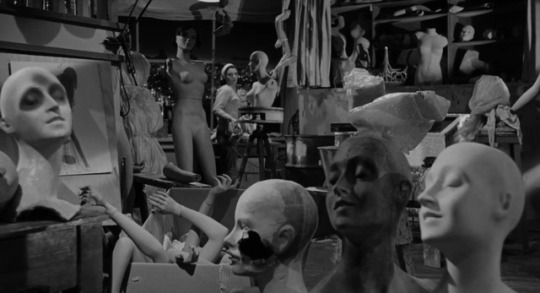

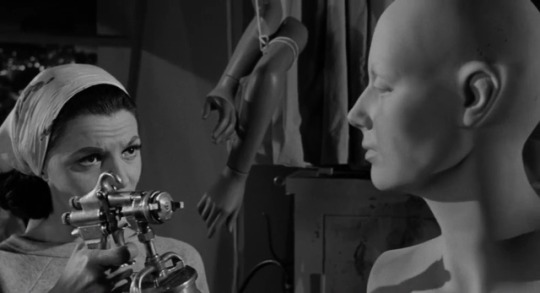
Experiment in Terror | Blake Edwards | 1962
Patricia Huston
17 notes
·
View notes
Photo
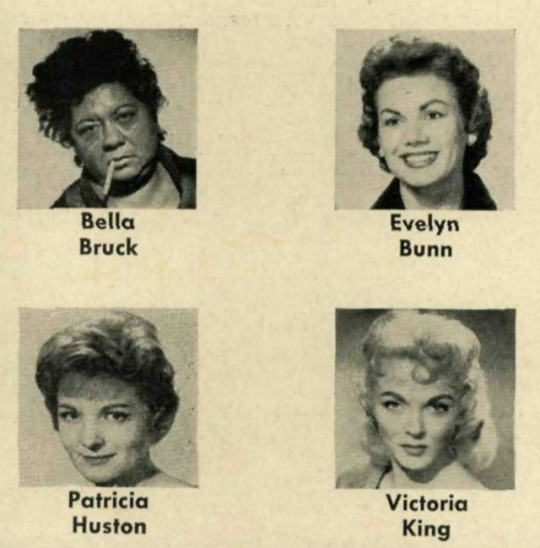
one of these is not like the other
38 notes
·
View notes
Photo
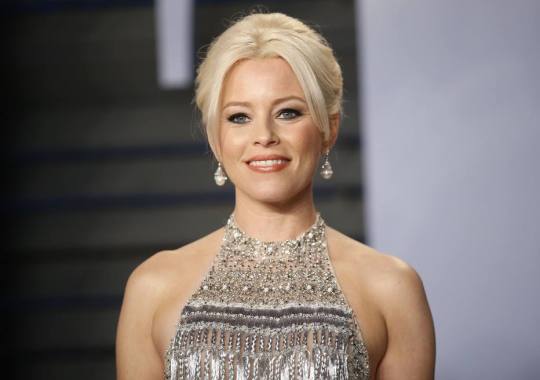
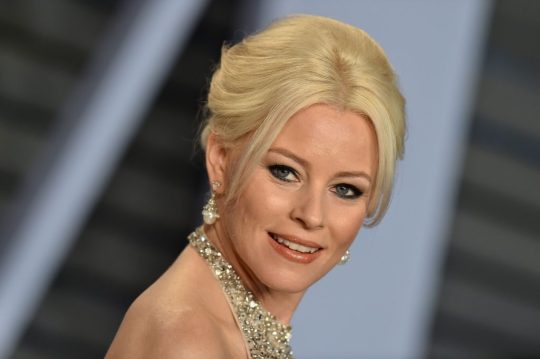

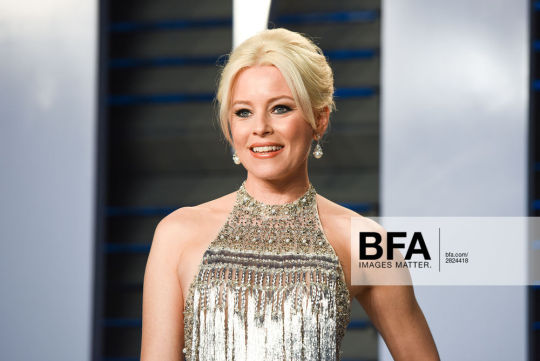

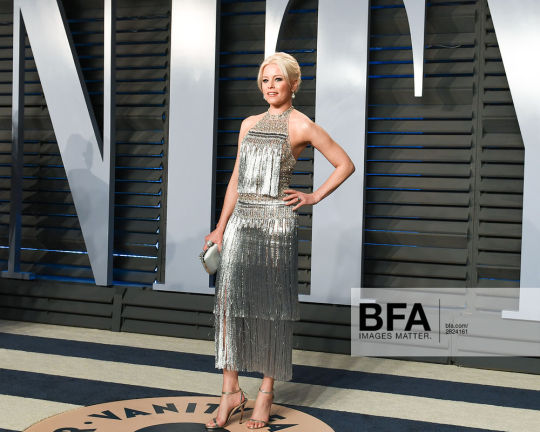
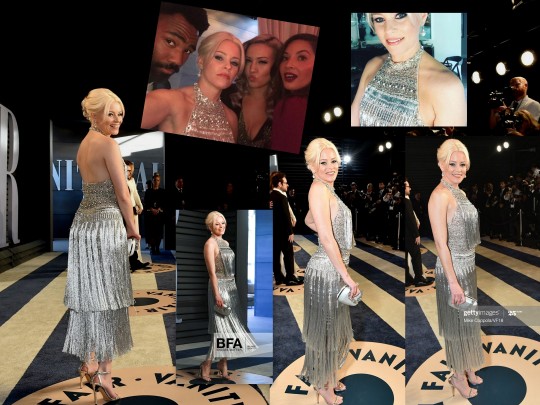
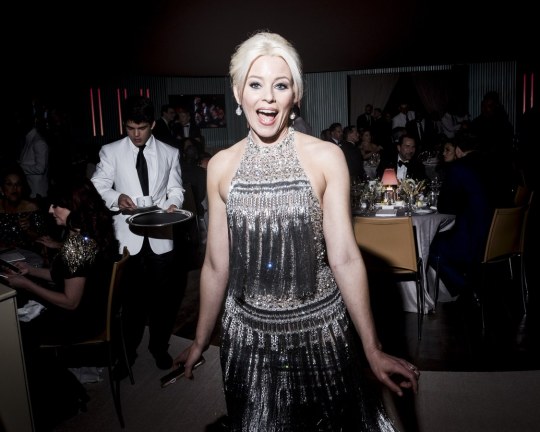

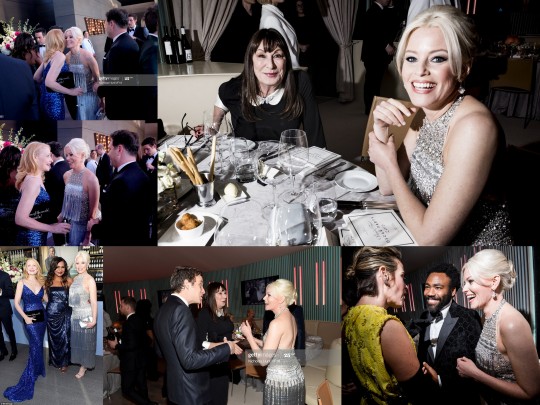
Elizabeth Banks with Donald Glover, Olivia Munn, Patricia Clarkson, Mindy Kaling, Anjelica Huston, James Jagger, Sarah Paulson
Vanity Fair Oscar Party in Los Angeles 03/04/2018
https://www.facebook.com/Inspirationlovephotographycamera/
https://www.instagram.com/inspirationlovephotography
#elizabeth banks#donald glover#olivia munn#patricia clarkson#mindy kaling#anjelica huston#james jagger#sarah paulson#famous#famous people#style#dress#long dress#silver dress#ralph & russo#jimmy choo#shoes#hotornotinspirationlovephotography#hotornot#hot or not#inspiration#inspirationlovephotography#mycolagemadzix6#my colage#vanity fair oscar party 2018#vanity fair oscar party#los angeles#event#blonde#actress
2 notes
·
View notes
Text
Me, after living in Los Angeles for over half a decade: Oh celebs are just people. No big deal :)
Also me, after running into a coffee shop and spotting Patricia Heaton with glasses, no makeup, and workout gear: She is a goddess. A literal goddess. A teensy-tiny divinity. We have done nothing to deserve her presence. Her skin was kissed by the Almighty. And absolute godd-
#patricia heaton#for real tho her skin is amazing#and she's so damn tiny#I'm 5'2" and I could have put her in my non-existent back pocket#I felt the same way about Anjelica Huston#except that bitch was TAAAAAAAALL
1 note
·
View note
Video
vimeo
Classic Movie Kisses (& Almost Kisses) from Anna Imhof on Vimeo.
Starring Humphrey Bogart, Lauren Bacall, Jane Wyatt, Ronald Colman, Mary Duncan, Charles Farrell, Joan Crawford, Franchot Tone, Burt Lancaster, Deborah Kerr, Fred MacMurray, Carole Lombard, Buster Keaton, Sybil Seely, Vivien Leigh, Robert Taylor, Olivia de Havilland, Montgomery Clift, Ava Gardner, Gregory Peck, Ginger Rogers, Fred Astaire, James Cagney, Jean Harlow, Dick Powell, Ruby Keeler, James Stewart, Grace Kelly, Katharine Hepburn, Spencer Tracy, Barbara Stanwyck, Gary Cooper, Claudette Colbert, Joel McCrea, Greta Garbo, Melvyn Douglas, Tyrone Power, Gene Tierney, Jimmy Stewart, Celia Johnson, Trevor Howard, Richard Widmark, Jean Peters, Marlene Dietrich, Gloria Swanson, William Holden, Clark Gable, Loretta Young, Paul Newman, Piper Laurie, Eva Marie Saint, Marlon Brando, Janet Leigh, Van Heflin, Cary Grant, Julie Harris, James Dean, Kim Hunter, Rita Hayworth, Lucille Bremer, Ronald Colman, Henry Fonda, John Gilbert, Jean Arthur, Toby Wing, Patricia Neal, Kathryn McGuire, Joan Fontaine, Laurence Olivier, Virginia Huston, Robert Mitchum, Dana Andrews, Linda Darnell, Shelley Winters, Margaret Leahy, Georgia Hale, Charlie Chaplin, Bette Davis, Leslie Howard, Jane Wyman, Mildred Davis, Harold Lloyd.
Music: "Wild is the Wind" by Nina Simone
For entertainment and educational purposes only. No copyright infringement intended.
May 17, 2017
13 notes
·
View notes
Text

Julie Doing “Stuff” With Famous People (6)
There were definitely no smiles given freely by Julie’s very serious character in WE WERE STRANGERS. Above Julie poses between scenes with costar Jennifer Jones.

Also on the WE WERE STRANGERS set, Julie and director John Huston get a visit from Burt Lancaster shown above. Also pictured are Lambert Day and Jules Buck.

Houston gives direction to Julie and actor Gilbert Roland above.

Director Tay Garnett confers between scenes with Julie and Lana Turner on THE POSTMAN ALWAYS RINGS TWICE in the photo above.

Same group of three above.

And ditto for above too.
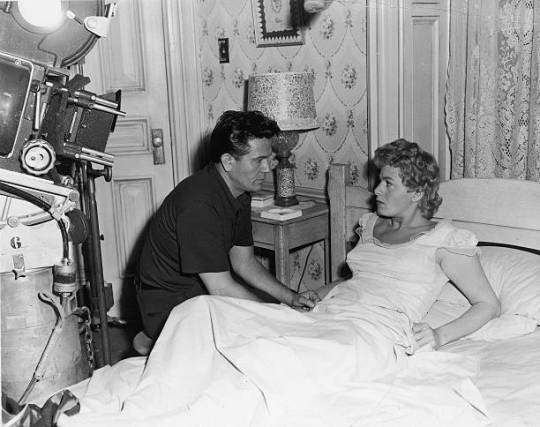
Shelley Winters and Julie get ready to shoot a scene in HE RAN ALL the WAY, shown above with the cameras nearby and ready to roll.

Patricia Neal poses with Julie above. They are on the set for THE BREAKING POINT. Julie’s looking right into the camera for this photo.

Julie is shown above with stars of stage and screen as a member of the Christmas Refugee Aid Campaign Committee. Shown are Newbold Morris giving the group a permit for fundraising Christmas trees throughout New York City. 25-cent contributions lit the trees and money collected helped foreign refugees. Left to right: Morris, Margalo Gilmore, Cary Grant, Vera Zorina, Raymond Massey, and an effervescent John Garfield.

Actor Robert Hutton and Julie sandwich studio head, Jack Warner in a 3-way handshake. Hope they got whatever he’s shaking on in writing! 😂
#john garfield#jennifer jones#we were strangers#the postman always rings twice#tay garnett#Lana turner#he ran all the way#shelley winters#Cary Grant#jack warner#Robert Hutton#burt lancaster#patricia neal#the breaking point#raymond massey#gilbert roland#john huston#Julie doing stuff with famous people#Julie doing “stuff” with famous people
27 notes
·
View notes
Text

Gene Eliza Tierney (November 19, 1920 – November 6, 1991) was an American film and stage actress. Acclaimed as a great beauty, she became established as a leading lady. Tierney was best known for her portrayal of the title character in the film Laura (1944), and was nominated for an Academy Award for Best Actress for her performance as Ellen Berent Harland in Leave Her to Heaven (1945).
Tierney's other roles include Martha Strable Van Cleve in Heaven Can Wait (1943), Isabel Bradley Maturin in The Razor's Edge (1946), Lucy Muir in The Ghost and Mrs. Muir (1947), Ann Sutton in Whirlpool (1949), Maggie Carleton McNulty in The Mating Season (1951), and Anne Scott in The Left Hand of God (1955).
I Gene Eliza Tierney was born on November 19, 1920 in Brooklyn, New York, the daughter of Howard Sherwood Tierney and Belle Lavinia Taylor. She was named after a beloved uncle, who died young.[4][page needed] She had an elder brother, Howard Sherwood "Butch" Tierney Jr., and a younger sister, Patricia "Pat" Tierney. Their father was a successful insurance broker of Irish descent, their mother a former physical education instructor.[4][page needed]
Tierney was raised in Westport, Connecticut. She attended St. Margaret's School in Waterbury, Connecticut, and the Unquowa School in Fairfield. She published her first poem, entitled "Night", in the school magazine and wrote poetry occasionally throughout her life. Tierney played Jo in a student production of Little Women, based on the novel by Louisa May Alcott.
Tierney spent two years in Europe, attending Brillantmont International School in Lausanne, Switzerland, where she learned to speak fluent French. She returned to the US in 1938 and attended Miss Porter's School in Farmington, Connecticut. On a family trip to the West Coast, she visited Warner Bros. studios, where a cousin worked as a producer of historical short films. Director Anatole Litvak, taken by the 17-year-old's beauty, told Tierney that she should become an actress. Warner Bros. wanted to sign her to a contract, but her parents advised against it because of the relatively low salary; they also wanted her to take her position in society.
Tierney's society debut occurred on September 24, 1938, when she was 17 years old. page needed] Soon bored with society life, she decided to pursue an acting career. Her father said, "If Gene is to be an actress, it should be in the legitimate theatre." Tierney studied acting at a small Greenwich Village acting studio in New York with Yiddish and Broadway actor/director Benno Schneider. She became a protégée of Broadway producer-director George Abbott.
In Tierney's first role on Broadway, she carried a bucket of water across the stage in What a Life! (1938). A Variety magazine critic declared, "Miss Tierney is certainly the most beautiful water carrier I've ever seen!" She also worked as an understudy in The Primrose Path (1938).
The following year, she appeared in the role of Molly O'Day in the Broadway production Mrs. O'Brien Entertains (1939). The New York Times critic Brooks Atkinson wrote, "As an Irish maiden fresh from the old country, Gene Tierney in her first stage performance is very pretty and refreshingly modest." That same year, Tierney appeared as Peggy Carr in Ring Two (1939) to favorable reviews. Theater critic Richard Watts Jr. of the New York Herald Tribune wrote, "I see no reason why Miss Tierney should not have an interesting theatrical career – that is, if cinema does not kidnap her away."
Tierney's father set up a corporation, Belle-Tier, to fund and promote her acting career. Columbia Pictures signed her to a six-month contract in 1939. She met Howard Hughes, who tried unsuccessfully to seduce her. From a well-to-do family herself, she was not impressed by his wealth. Hughes eventually became a lifelong friend.
After a cameraman advised Tierney to lose a little weight, she wrote to Harper's Bazaar magazine for a diet, which she followed for the next 25 years. Tierney was initially offered the lead role in National Velvet, but production was delayed. page needed] When Columbia Pictures failed to find Tierney a project, she returned to Broadway and starred as Patricia Stanley to critical and commercial success in The Male Animal (1940). In The New York Times, Brooks Atkinson wrote, "Tierney blazes with animation in the best performance she has yet given". She was the toast of Broadway before her 20th birthday. The Male Animal was a hit, and Tierney was featured in Life magazine. She was also photographed by Harper's Bazaar, Vogue, and Collier's Weekly.
Two weeks after The Male Animal opened, Darryl F. Zanuck, the head of 20th Century Fox, was rumored to have been in the audience. During the performance, he told an assistant to note Tierney's name. Later that night, Zanuck dropped by the Stork Club, where he saw a young lady on the dance floor. He told his assistant, "Forget the girl from the play. See if you can sign that one." It was Tierney. At first, Zanuck did not think she was the actress he had seen. Tierney was quoted (after the fact), saying: "I always had several different 'looks', a quality that proved useful in my career."
Tierney signed with 20th Century-Fox[4][page needed] and her motion picture debut was in a supporting role as Eleanor Stone in Fritz Lang's western The Return of Frank James (1940), opposite Henry Fonda.
A small role as Barbara Hall followed in Hudson's Bay (1941) with Paul Muni and she co-starred as Ellie Mae Lester in John Ford's comedy Tobacco Road (also 1941), and played the title role in Belle Starr alongside co-star Randolph Scott, Zia in Sundown, and Victoria Charteris (Poppy Smith) in The Shanghai Gesture. She played Eve in Son of Fury: The Story of Benjamin Blake (1942), as well as the dual role of Susan Miller (Linda Worthington) in Rouben Mamoulian's screwball comedy Rings on Her Fingers, and roles as Kay Saunders in Thunder Birds, and Miss Young in China Girl (all 1942).
Receiving top billing in Ernst Lubitsch's comedy Heaven Can Wait (1943), as Martha Strable Van Cleve, signaled an upward turn in Tierney's career. Tierney recalled during the production of Heaven Can Wait:
Lubitsch was a tyrant on the set, the most demanding of directors. After one scene, which took from noon until five to get, I was almost in tears from listening to Lubitsch shout at me. The next day I sought him out, looked him in the eye, and said, 'Mr. Lubitsch, I'm willing to do my best but I just can't go on working on this picture if you're going to keep shouting at me.' 'I'm paid to shout at you', he bellowed. 'Yes', I said, 'and I'm paid to take it – but not enough.' After a tense pause, Lubitsch broke out laughing. From then on we got along famously.
Tierney starred in what became her best-remembered role: the title role in Otto Preminger's film noir Laura (1944), opposite Dana Andrews. After playing Tina Tomasino in A Bell for Adano (1945), she played the jealous, narcissistic femme fatale Ellen Berent Harland in Leave Her to Heaven (1945), adapted from a best selling novel by Ben Ames Williams. Appearing with Cornel Wilde, Tierney won an Academy Award nomination for Best Actress. This was 20th Century-Fox' most successful film of the 1940s. It was cited by director Martin Scorsese as one of his favorite films of all time, and he assessed Tierney as one of the most underrated actresses of the Golden Era.
Tierney then starred as Miranda Wells in Dragonwyck (1946), along with Walter Huston and Vincent Price. It was Joseph L. Mankiewicz' debut film as a director, In the same period, she starred as Isabel Bradley, opposite Tyrone Power, in The Razor's Edge (also 1946), an adaptation of W. Somerset Maugham's novel of the same name. Her performance was critically praised.
Tierney played Lucy Muir in Mankiewicz's The Ghost and Mrs. Muir (1947), opposite Rex Harrison. The following year, she co-starred again with Power, this time as Sara Farley in the successful screwball comedy That Wonderful Urge (1948). As the decade came to a close, Tierney reunited with Laura director Preminger to star as Ann Sutton in the classic film noir Whirlpool (1949), co-starring Richard Conte and José Ferrer. She appeared in two other film noirs: Jules Dassin's Night and the City, shot in London, and Otto Preminger's Where the Sidewalk Ends (both 1950), reunited with both Preminger and leading man Dana Andrews, who she appeared with in five movies total.
Tierney was loaned to Paramount Pictures, giving a comic turn as Maggie Carleton in Mitchell Leisen's ensemble farce, The Mating Season (1951), with John Lund, Thelma Ritter, and Miriam Hopkins. She gave a tender performance as Midge Sheridan in the Warner Bros. film, Close to My Heart (1951), with Ray Milland. The film is about a couple trying to adopt a child. Later in her career, she was reunited with Milland in Daughter of the Mind (1969).
After Tierney appeared opposite Rory Calhoun as Teresa in Way of a Gaucho (1952), her contract at 20th Century-Fox expired. That same year, she starred as Dorothy Bradford in Plymouth Adventure, opposite Spencer Tracy at MGM. She and Tracy had a brief affair during this time.[10] Tierney played Marya Lamarkina opposite Clark Gable in Never Let Me Go (1953), filmed in England.
In the course of the 1940s, she reached a pinnacle of fame as a beautiful leading lady, on a par with "fellow sirens Rita Hayworth, Lana Turner and Ava Gardner". She was "called the most beautiful woman in movie history" and many of her movies in the 1940s became classic films.
Tierney remained in Europe to play Kay Barlow in United Artists' Personal Affair (1953). While in Europe, she began a romance with Prince Aly Khan, but their marriage plans met with fierce opposition from his father Aga Khan III. Early in 1953, Tierney returned to the U.S. to co-star in the film noir Black Widow (1954) as Iris Denver, with Ginger Rogers and Van Heflin.
Tierney had reportedly started smoking after a screening of her first movie to lower her voice, because she felt, "I sound like an angry Minnie Mouse." She subsequently became a heavy smoker.
With difficult events in her personal life, Tierney struggled for years with episodes of manic depression. In 1943, she gave birth to a daughter, Daria, who was deaf and mentally disabled, the result of a fan breaking a rubella quarantine and infecting the pregnant Tierney while she volunteered at the Hollywood Canteen. In 1953, she suffered problems with concentration, which affected her film appearances. She dropped out of Mogambo and was replaced by Grace Kelly.[4][page needed] While playing Anne Scott in The Left Hand of God (1955), opposite Humphrey Bogart, Tierney became ill. Bogart's sister Frances (known as Pat) had suffered from mental illness, so he showed Tierney great sympathy, feeding her lines during the production and encouraging her to seek help.
Tierney consulted a psychiatrist and was admitted to Harkness Pavilion in New York. Later, she went to the Institute of Living in Hartford, Connecticut. After some 27 shock treatments, intended to alleviate severe depression, Tierney fled the facility, but was caught and returned. She later became an outspoken opponent of shock treatment therapy, claiming it had destroyed significant portions of her memory.
In late December 1957, Tierney, from her mother's apartment in Manhattan, stepped onto a ledge 14 stories above ground and remained for about 20 minutes in what was considered a suicide attempt. Police were called, and afterwards Tierney's family arranged for her to be admitted to the Menninger Clinic in Topeka, Kansas. The following year, after treatment for depression, she was discharged. Afterwards, she worked as a sales girl in a local dress shop with hopes of integrating back into society, but she was recognized by a customer, resulting in sensational newspaper headlines.
Later in 1958, 20th Century-Fox offered Tierney a lead role in Holiday for Lovers (1959), but the stress upon her proved too great, so only days into production, she dropped out of the film and returned to Menninger for a time.
Tierney made a screen comeback in Advise and Consent (1962), co-starring with Franchot Tone and reuniting with director Otto Preminger.[4][page needed] Soon afterwards, she played Albertine Prine in Toys in the Attic (1963), based on the play by Lillian Hellman. This was followed by the international production of Las cuatro noches de la luna llena, (Four Nights of the Full Moon - 1963), in which she starred with Dan Dailey. She received critical praise overall for her performances.
Tierney's career as a solid character actress seemed to be back on track as she played Jane Barton in The Pleasure Seekers (1964), but then she suddenly retired. She returned to star in the television movie Daughter of the Mind (1969) with Don Murray and Ray Milland. Her final performance was in the TV miniseries Scruples (1980).
Tierney married two men: the first was Oleg Cassini, a costume and fashion designer, on June 1, 1941, with whom she eloped. She was 20 years old. Her parents opposed the marriage, as he was from a Russian-Italian family and born in France. She had two daughters, Antoinette Daria Cassini (October 15, 1943 – September 11, 2010) and Christina "Tina" Cassini (November 19, 1948 – March 31, 2015).
In June 1943, while pregnant with Daria, Tierney contracted rubella (German measles), likely from a fan ill with the disease. Antoinette Daria Cassini was born prematurely in Washington, DC, weighing three pounds, two ounces (1.42 kg) and requiring a total blood transfusion. The rubella caused congenital damage: Daria was deaf, partially blind with cataracts, and severely mentally disabled. She was institutionalized for much of her life. This entire incident was inspiration for a plot point in the 1962 Agatha Christie novel The Mirror Crack'd from Side to Side.
It is claimed that she had an affair with Mohammad Reza Shah of Iran during the late 1940s.
Tierney's friend Howard Hughes paid for Daria's medical expenses, ensuring the girl received the best care. Tierney never forgot his acts of kindness. Daria Cassini died in 2010, at the age of 66.
Tierney and Cassini separated October 20, 1946, and entered into a property settlement agreement on November 10. Periodicals during this period record Tierney with Charles K. Feldman, including articles related to her "twosoming" with Feldman, her "current best beau". The divorce was to be finalized in March 1948, but they reconciled before then.
During their separation, Tierney met John F. Kennedy, a young World War II veteran, who was visiting the set of Dragonwyck in 1946. They began a romance that she ended the following year after Kennedy told her he could never marry her because of his political ambitions. In 1960, Tierney sent Kennedy a note of congratulations on his victory in the presidential election. During this time, newspapers documented Tierney's other romantic relationships, including Kirk Douglas.
While filming for Personal Affair in Europe, she began a romance with Prince Aly Khan. They became engaged in 1952, while Khan was going through a divorce from Rita Hayworth. Their marriage plans, however, met with fierce opposition from his father, Aga Khan III.
Cassini later bequeathed $500,000 in trust to Daria and $1,000,000 to Christina. Cassini and Tierney remained friends until her death in November 1991.
In 1958, Tierney met Texas oil baron W. Howard Lee, who had been married to actress Hedy Lamarr since 1953. Lee and Lamarr divorced in 1960 after a long battle over alimony, then Lee and Tierney married in Aspen, Colorado, on July 11, 1960. They lived quietly in Houston, Texas, and Delray Beach, Florida until his death in 1981.
Despite her self-imposed exile in Texas, Tierney received work offers from Hollywood, prompting her to a comeback. She appeared in a November 1960 broadcast of General Electric Theater, during which time she discovered that she was pregnant. Shortly after, 20th Century Fox announced Tierney would play the lead role in Return to Peyton Place, but she withdrew from the production after suffering a miscarriage.
Tierney's autobiography, Self-Portrait, in which she candidly discusses her life, career, and mental illness, was published in 1979.
Tierney's second husband, W. Howard Lee, died on February 17, 1981 after a long illness.[24]
In 1986, Tierney was honored alongside actor Gregory Peck with the first Donostia Lifetime Achievement Award at the San Sebastian Film Festival in Spain.
Tierney has a star on the Hollywood Walk of Fame at 6125 Hollywood Boulevard.
Tierney died of emphysema on November 6, 1991, in Houston, thirteen days before her 71st birthday. She is interred in Glenwood Cemetery in Houston.
Certain documents of Tierney's film-related material, personal papers, letters, etc., are held in the Wesleyan University Cinema Archives, though her papers are closed to the public.
21 notes
·
View notes
Text
Bobby Deerfield (Sydney Pollack, 1977)
Esta película, que su autor considera la más personal que ha hecho hasta ahora, viene a confirmar el talento de este cineasta misterioso y sensible, discreto y pudoroso, elegante y tranquilo, revelado ya en Propiedad condenada (This Property is Condemned, 1966) y ratificado, al menos en parte y pese a algún que otro traspiés, en Tal como éramos (1973), Los 3 días del Cóndor (1975), Yakuza (1974), Aventuras de Jeremiah Johnson (1972) y Danzad, danzad, malditos (1969), que han logrado dar, más allá de sus virtudes o defectos, una imagen bastante precisa e interesante de Sydney Pollack: sentimental, nostálgico, melancólico, emotivo, con sentimiento del ritmo y de la imagen, algo blando tal vez, gran director de actores. Un cineasta, pues, emparentable con Cukor o Borzage —aunque tal vez quede a la altura, más discreta, de John Cromwell o Tay Garnett— y, entre los más jóvenes, con Mulligan y Pakula.
Se ha dicho que Bobby Deerfield es un film anticuado, lo que es cierto sin duda, en vista de los insultos que se le han dirigido. Se trata de un auténtico melodrama que no se avergüenza de serlo; no sólo no oculta el género en que se zambulle con entusiasmo, sino que lo hace a las claras, sin coartadas, sin mala conciencia, sin ironías de segundo grado ni artilugios distanciadores. Se propone emocionar, aunque no a cualquier precio, y debe conseguirlo, ya que la mala acogida crítica no parece haberle restado espectadores. Basada en una vieja novela —puesta al día por Alvin Sargent— de Erich Maria Remarque —escritor al que tendré que leer, por culpa de Tiempo de amar, tiempo de morir y Bobby Deerfield—, titulada en inglés Heaven Has No Favorites, tiene algún que otro punto de contacto —más por su espíritu que por su trama argumental— con dos de las mejores obras de Hemingway, A Farewell to Arms y Across the River and Into the Trees (1). Tal vez por eso Bobby Deerfield me ha hecho pensar en Frank Borzage, que dirigió Three Comrades (1938) de Remarque y la segunda versión (1932) de Adiós a la armas: el caso es que, una vez que se acuerda uno de Borzage, no es fácil olvidarle mientras se asiste al último Pollack: encontramos en Bobby Deerfield, además de una historia de souls made great by love and adversity como las que amaba el autor de Disputed Passage e History is Made at Night, la misma bidimensionalidad visual, los mismos planos difusos —que aíslan a los protagonistas del entorno físico que les rodea—, la misma afición a la elipsis discreta, el mismo temperamento romántico pero sin altisonancias —más próximo de Schubert que de Wagner—, idéntica delicadeza, el mismo afecto por los seres cuya triste historia narra. No es extraño, pues, que Bobby Deerfield detone en 1977, como debió detonar, en 1945, el estreno de Metamorfosis de Richard Strauss (2).
Ya creo haber dado pistas suficientes, pero lo diré Bobby Deerfield es algo hoy bastante extraño, un film de personajes, no de ideas ni de debate, ni periodístico. Y lo es, además, en un sentido bastante original y, si se quiere, moderno: Pollack no nos explica a sus personajes, no nos impone una visión «redondeada» y definitiva de ellos. Nos presenta a Bobby (Al Pacino, magnífico) in media res: Liliana (Marthe Keller, asombrosa) se presenta sola, sin que nadie le invite a hacerlo, a Bobby y a los espectadores, para luego evadirse, ocultarse, volver a entrometerse, siempre misteriosa y elusiva, desconcertante y escurridiza. Es decir, que los personajes se limitan a vivir —o agonizar— ante nosotros, definiéndose —en la medida en que lo hacen— exclusivamente por su conducta, y más por lo que callan —o por su forma de hablar— que por lo que dicen. Esta presentación, totalmente externa, alérgica al psicologismo, obliga al espectador no indiferente a escrutar atentamente cada gesto, intentando reconstruir por las huellas de ellos que nos trasmite Pollack —pocas y fragmentarias— el modo de ser, la biografía, el destino de Bobby y Liliana. Son, eso se ve pronto, muy diferentes: ella habla demasiado, él es excesivamente lacónico (tiende a la respuesta monosilábica, no suele preguntar, nunca cuenta espontáneamente nada). Esta contraposición de caracteres, de procedencias, de raíces culturales —o de falta de raíces—, de objetivos —o de falta de objetivos— es la base del conflictivo amor que, paulatinamente, van descubriendo entre ellos, al irse encontrando y desencontrando al dictado de un azar que —no sabría decir por qué— me hizo pensar en André Breton; tal vez porque todos hayamos soñado alguna vez con toparnos, a la vuelta de una esquina o en un café, con una mujer preocupante y perturbadora, como su Nadja.
Si el penúltimo, magistral y menospreciado film de Penn, La noche se mueve (Night Moves, 1975), se negaba a hacernos participes del misterio que intentaba desentrañar su protagonista, y nos hacía ver que, además, no era esa la única trama ni la más interesante, y nos invitaba, por tanto, a convertirnos en investigadores, el último Pollack nos invita a compartir con Bobby el desconcierto y la inquietud que suscita en él el comportamiento de Liliana, y nos obliga a actuar como psiquiatras aficionados. Al mismo tiempo, Pollack impide que nos identifiquemos con Bobby —demasiado opaco e inexpresivo—, lo que mina nuestra seguridad y nos fuerza a tomar como eje de coordenadas el contraste evidente que existe entre el corredor americano de Fórmula 1 y la locuaz aristócrata italiana. Observamos así que Bobby es un hombre apático, pasivo, autocontrolado (tranquilo pero en tensión: se diría que duerme con el cuerpo rígido y apretando los párpados (3)), mientras que Liliana vive angustiada, inquieta, y apenas puede controlar sus actos. Él es callado, nada comunicativo, introvertido, y se oculta tras unas perennes gafas oscuras; ella es inquisitiva, habladora, impertinente, descarada: no dice nada, pero habla por los codos, y no vacila en hacer las preguntas más indiscretas o disparatadas; él es asténico, casi ascético (no come), cauteloso, precavido, mientras ella engulle alimentos con voracidad, no para de hablar y moverse, y está abierta a cualquier aventura, por caprichosa que sea. Bobby sólo corre riesgos calculados, que afronta desde la pericia y la seguridad en sí mismo; Liliana dice que morirá a su manera, y se despide en una ocasión del corredor entregándole una nota de reproche: «Todo es más dulce si se arriesga algo». Atraída por todo lo desconocido, no comprende que él se atrinchere tras la lógica, que pida motivos para gritar, seguir a un globo aerostático o volar en él, y se obsesione, en cambio, tratando de buscar una explicación a un accidente automovilístico. Por eso intenta embarcarle en situaciones imprevisibles, y le obliga a que se quite las gafas, al tiempo que se resiste a someterse a observación: «No quiero que me descifren, no necesito que me descifren», le dice, siempre insistente y enfática. Y así, poco a poco, Bobby por curiosidad, Liliana por afán de sacarle de sus casillas, van estableciendo una relación verdaderamente arriesgada, a cuyo trágico fin nos conduce Pollack sin estridencias, sin espectacularidad ni efectismo, simplemente confirmando lo que ya nos temíamos a partir de escenas escalofriantes —como aquélla en que Bobby acaricia el pelo de Liliana, dormida, y se queda con un mechón en la mano— o patéticamente divertidas, es decir, las típicas escenas difíciles que, en los tiempos de estafadores que corren, se nos suelen escamotear mediante «oportunas» y cómodas elipsis. Que Pollack dé la cara, se enfrente a las escenas más duras y no haga concesiones al folletín ni trate de cubrirse adoptando el aire de «superioridad» y de «estar de vuelta al que tan aficionados son casi todos los directores de su promoción, sería ya bastante motivo para seguirle la pista; que, encima, esas escenas sean espléndidas le abre un margen de confianza bastante amplio.
Miguel Marías
Revista “Dirigido por…” nº 51, febrero-1978
(1) Pura coincidencia, sin duda, pero curiosa: John Huston ha estado a punto de dirigir This Property is Condemned, la tercera versión cinematográfica de A Farewell to Arms y, hace sólo unos meses, Across the River and Into the Trees; This Property is Condemned —el primer film de Pollack con Robert Redford— tenía por protagonista a Natalie Wood, lo mismo que dos de las películas de Mulligan que produjo Pakula (Amores con un extraño y La rebelde). Alvin Sargent fue el guionista de la última película de Mulligan que produjo Pakula (La noche de los gigantes). Por último, si Mulligan aludía directamente a Now, Voyager (1942), de Irving Rapper, en Verano del 42, Pollack citaba en Propiedad condenada una película que tiene bastante que ver con aquella y con Bobby Deerfield, One Way Passage (1932) de Tay Garnett. En cuanto a Cromwell, que a veces sugiere un Cukor menor, pertenece también al gremio de los adaptadores de Remarque: So Ends Our Night (1941), pasado no hace mucho por T.V.E., está basada en Flotsam.
(2) Este genial Estudio para 23 instrumentos de cuerda, compuesto a raíz del bombardeo que destruyó en 1943 su ciudad natal, Munich, y acabado cuando Richard Strauss tenía 81 años, hubiera sido la banda sonora ideal de Tiempo de amar, tiempo de morir de Sirk, pese a que la música compuesta por Miklós Rózsa es espléndida.
(3) «Querría conseguir cerrar los ojos muy fuerte, muy, muy fuerte, para que todo se haga completamente negro, verdaderamente negro, completamente, pero no lo consigo nunca», cita Godard en su crítica de A Time to Love and a Time to Die; frase que, casi idéntica, pondría en boca de Patricia (Jean Seberg), unos meses después en À bout de souffle.
3 notes
·
View notes